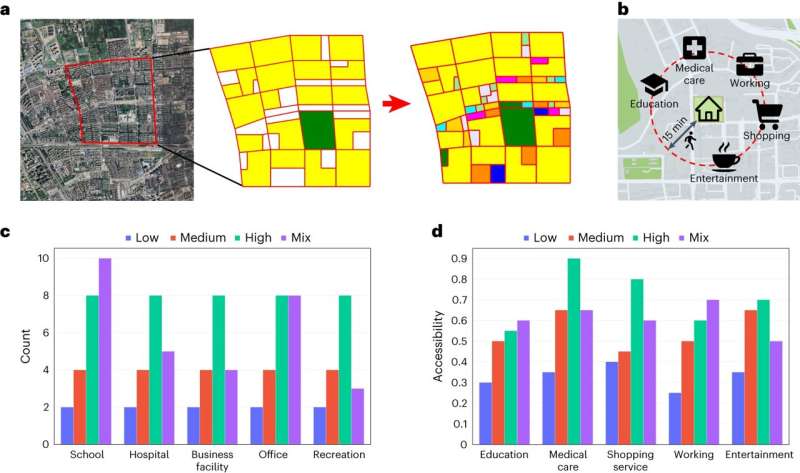September 18, 2023 report
This article has been reviewed according to Science X's editorial process and policies. Editors have highlighted the following attributes while ensuring the content's credibility:
fact-checked
peer-reviewed publication
trusted source
proofread
AI system found to outperform humans in creating urban planning designs

A team of urban planners and information scientists at Tsinghua University in China has found that an AI-based urban planning system was able to outperform human experts in creating urban planning designs. In their study, reported in the journal Nature Computational Science, the group describes the factors that were used in describing the ideal urban plan and how well their AI did when tested. Paolo Santi, with the MIT Senseable City Lab, has published a News & Views piece in the same journal issue outlining the work done by the team on this new effort.
For much of history, cities have been left to grow organically—immediate needs were determined and urban planners and engineers attempted to fulfill those needs. In many cases, such a haphazard approach to urban growth has led to less-then-optimal results. In more recent times, city officials and other planners have attempted to take a more logical approach to the problem by creating designs for areas to be developed that account for things like livability and pollution controls.
This has led to the development of urban planning as a science and the advent of professional urban development experts. This science can be extremely complicated due to the increasing number of variables that must be accounted for as the size of a new development increases. In this new effort, the research team found a way to apply AI to the problem to ease the burden.
In developing their AI system, the team chose to use the 15-minute concept, in which residents of the planned community should be able to travel from their homes to essential services within 15 minutes. Under such a system, quality of life is improved due to reduced travel time and far less generated air pollution. The researchers trained the system with prior plans crafted by humans along with factors that are believed to be good design features such as the inclusion of parks, general greenery, bike paths and places for entertainment.
Once the system was built, the research group used it to first design a small community in a 3x3 grid city block. That allowed them to tweak the system, which led to improvements. They then gradually increased the size of the development desired and studied its results.
The researchers found the plans the system developed were as good or better than those created by humans. They also found a huge reduction in time—from hours to seconds. The team concludes that their system is not meant to replace human urban planners, but to free them from the mundane parts of urban planning, allowing them to focus on overall concepts.
More information: Yu Zheng et al, Spatial planning of urban communities via deep reinforcement learning, Nature Computational Science (2023). DOI: 10.1038/s43588-023-00503-5
Paolo Santi, AI improves the design of urban communities, Nature Computational Science (2023). DOI: 10.1038/s43588-023-00515-1
© 2023 Science X Network


















